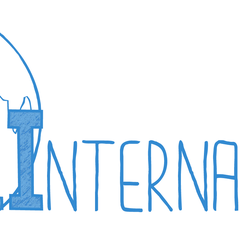
T1International Statement on Executive Orders
14 Sep 2020, 5:04 p.m. in #insulin4all USA, News & Statements by T1International
Update: On September 13, President Trump released a new executive order that would implement a “most favored nation” price for drugs under Medicare Part B and Part D. Patients need relief from predatory insulin prices now, but the President's executive order won't deliver. While this Executive Order could dramatically lower insulin costs for some senior citizens if it goes into effect, that could take months or years if it ever happens at all — and patients don't have that kind of time to wait for change. Rather than make announcements he can tout on the campaign trail, the President should use his existing authority under federal law to bring down the price of insulin immediately. This post was further updated February 16, 2021.
On July 24th, President Trump released four executive orders intended to lower drug prices, including two targeted directly at lowering the cost of insulin for patients who rely on it. Despite his assertion that these orders are intended to “completely restructure the prescription drug market,” these orders will not do anything to fix the underlying cause of the insulin crisis in America. Patients will still need to wait months for the rulemaking process to run its course, and likely even longer after that if these orders end up in court. While T1Internationalis glad that the administration has stated that making insulin more affordable is a priority, these orders miss the mark. We don’t need incremental bureaucratic steps as an election approaches - we need transformative change that will make our medicine more affordable now.
The two orders that are most relevant to the lives of people with diabetes are the order that requires federally qualified health centers (FQHCs) to allow patients to purchase insulin directly from the FQHC at a steeply discounted price, and the order that builds on the plan released by the Department of Health and Human Services to allow for the importation of drugs such as insulin from Canadian manufacturers. Neither order would hold Eli Lilly, Sanofi, and Novo Nordisk accountable for their price gouging, nor would they do anything to reduce the list price of insulin, which has soared by well over 100% since 2012.
As previously noted on T1International’s blog, getting insulin through a 340B pharmacy can help patients to afford this life-sustaining medication. On the surface, President Trump’s order to make it easier for patients to purchase insulin through an FQHC seems helpful. However, his executive order would make it harder to FQHCs to continue providing the same level of care, including discounted insulin, to low-resource communities that they do now — with potentially devastating effects for many patients.
Similarly, #insulin4all advocates know better than most that the insulin they need, which costs hundreds of dollars per vial in the United States, is more affordable just across the border in Canada. However, the Canadian government has already made clear that they are not interested in exporting Canada’s supply of medicine en masse to the United States just because the U.S. government refuses to confront Big Pharma and lower drug prices for the exact same medicine, rendering this policy ineffective on a broad scale.
99 years ago today, Frederick Banting and Charles Best first isolated insulin, which would soon make it possible for people with diabetes to manage their condition. But since then, unchecked corporate greed has put this life-saving medication out of reach for too many people. President Trump was correct in diagnosing the problem and its solution before he even took office when he said that pharmaceutical corporations are “getting away with murder.” Since then, he has considered every policy option available to bring drug prices down except for the most obvious: action that will reduce medication list prices for everyone, including people without insurance. If the president really wants to lower the price of insulin and address the crisis of high drug prices, he already knows the solution; the question is whether he has the political courage to pursue it.








